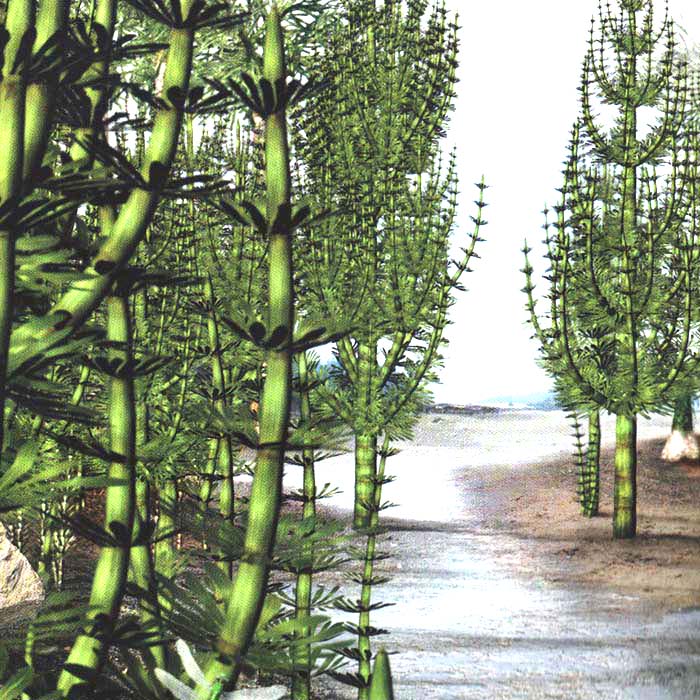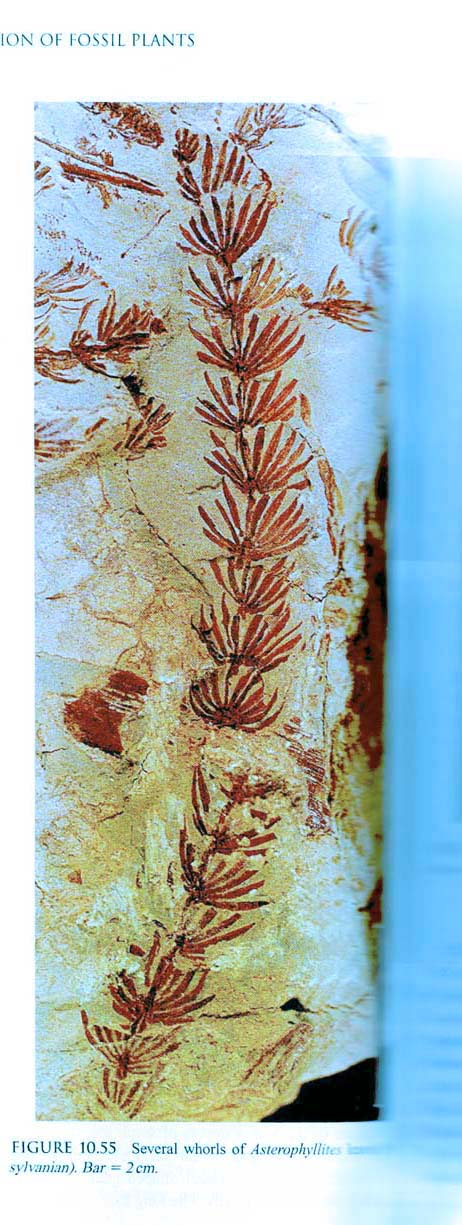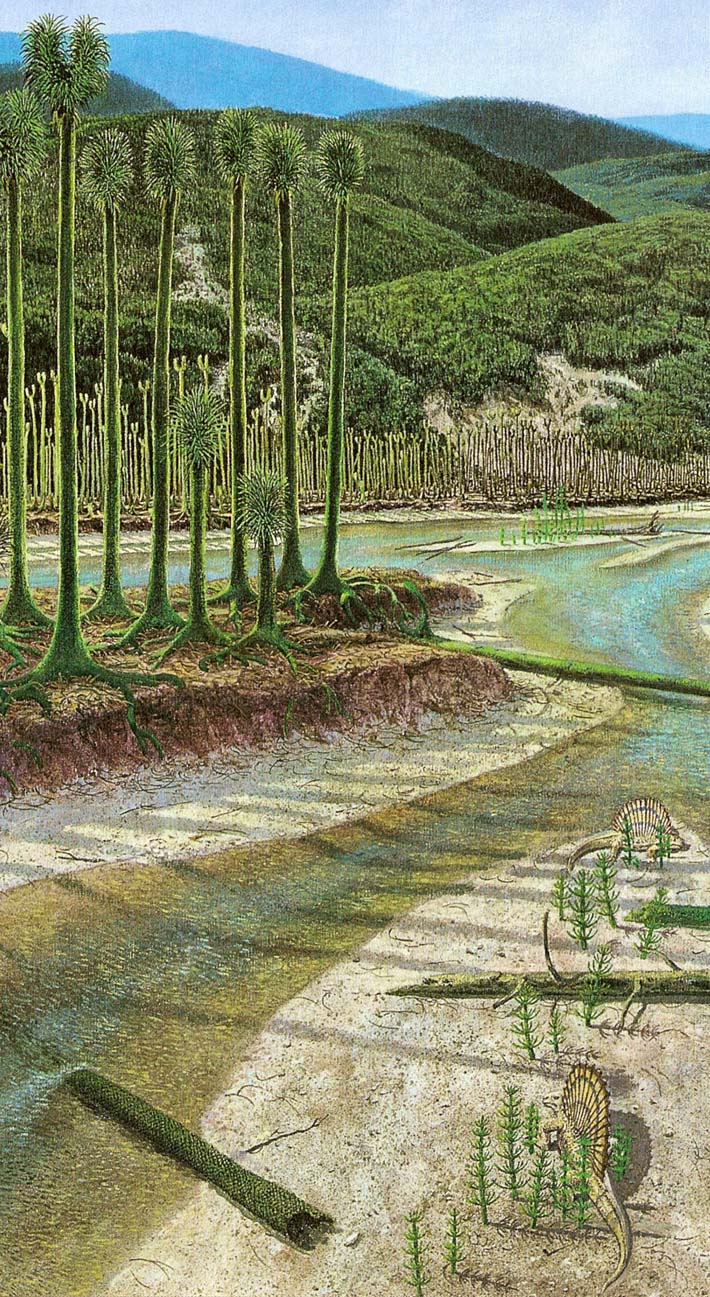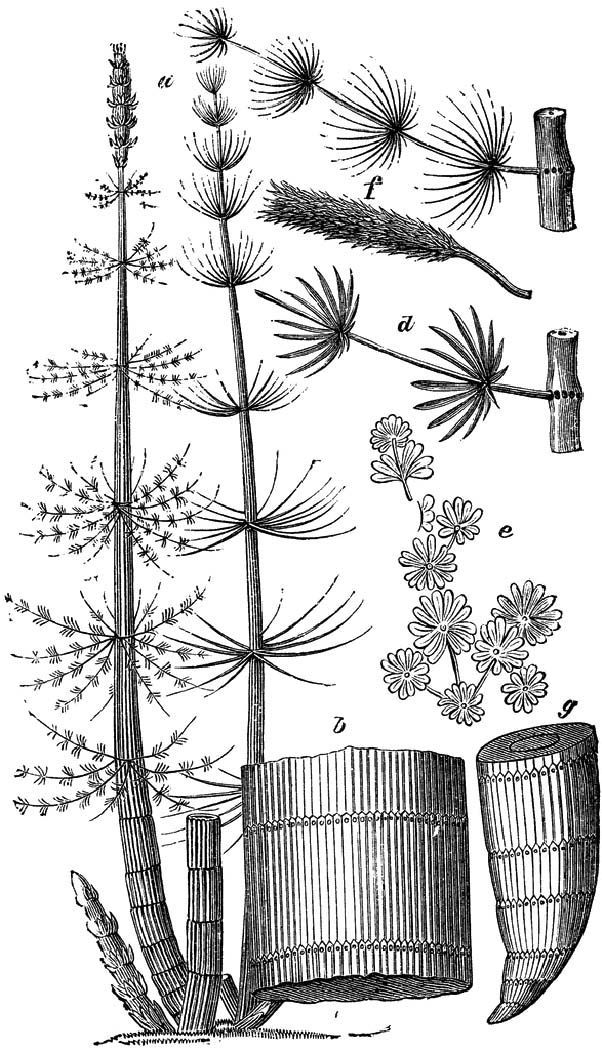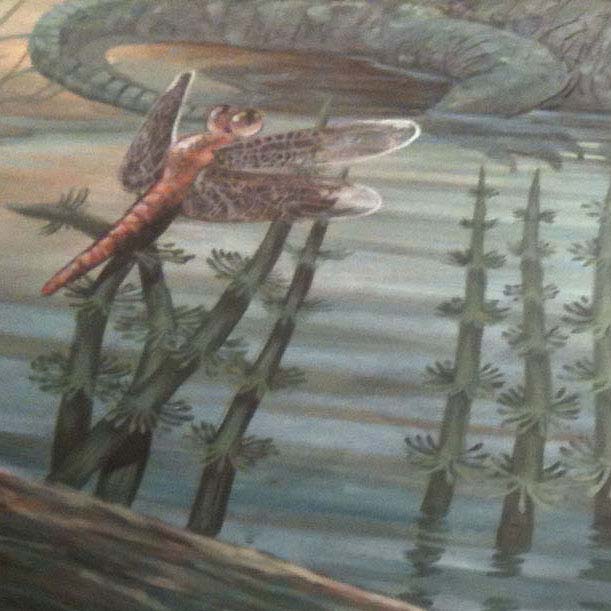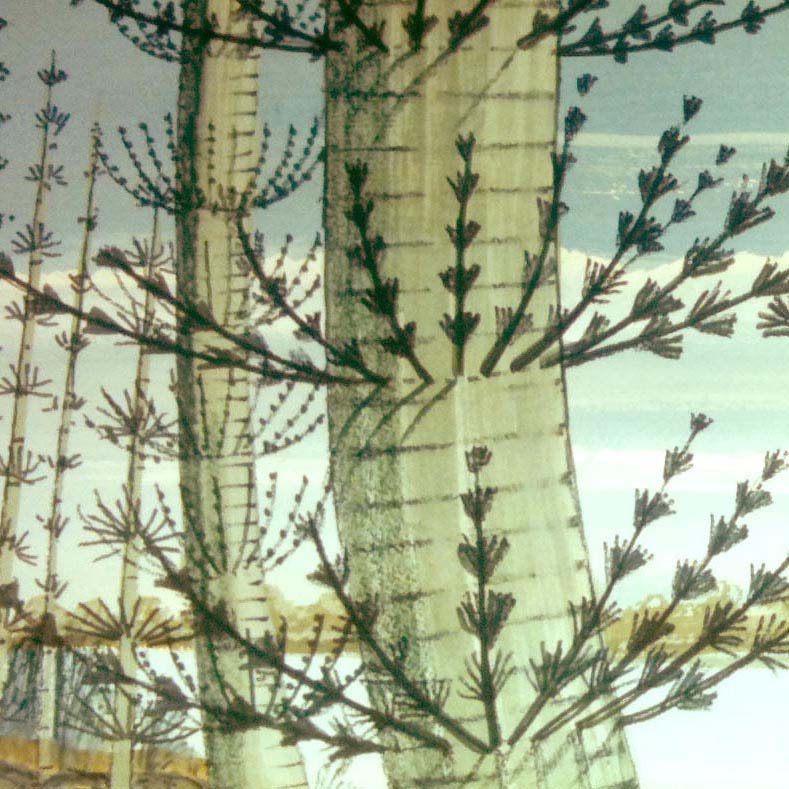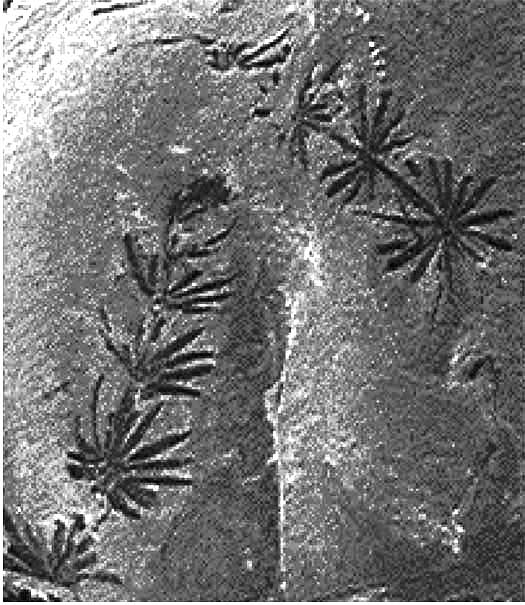The Carboniferous (360 to 300 million years ago) is sometimes called the Age of Amphibians. During this period, the air was warm, humid, and full of oxygen. Four-legged life moved from sea to land, gigantic insects roamed, dragonflies as large as hawks flew. Vast swamp forests grew, died, and were buried, eventually becoming the fossil fuels we burn today.
Calamites could grow more than 60 ft high, but fossils show the plants' leaves are small and delicate. Age of Amphibians greatly exaggerates their scale, and imagines seedheads terminating each stem.
For a printable narrative, click here
A digital rendering of tree-like Calamites, from DK's Prehistoric Life. According to Taylor Taylor and Krings, some Calamites species grew from underground rhizome systems
Paleobotany by Taylor Taylor and Krings is a scholarly resource on fossil plants that is full of great photos
Jan Vriesen's painting for the Denver Museum depicts small Calamites in a sandbar
from J. E. Taylor's Geological Stories, 1904, ClipartETC
Artist recreations at Atlanta's Fernbank Museum
The dynamic composition of this particular fossil from West Virginia (source: Monte Hieb) was the direct source for Age of Amphibians



